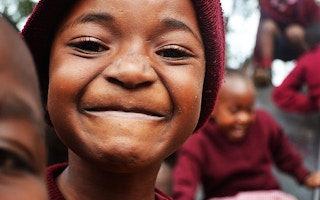Taking the temperature of a nation’s health on issues such as poverty reduction, ending hunger, achieving gender equality, building better infrastructure and protecting the oceans is a massive undertaking.
But that’s precisely what dozens of countries around the world are doing this week at the United Nations, where they reviewed progress toward the global body’s 15-year benchmarks known as the Sustainable Development Goals, or SDGs.
But a thorough accounting at the national level isn’t much good without insights from local governments, according to the Network of Regional Governments for Sustainable Development, known by the acronym nrg4SD.
In a new report, “SDGs at the Subnational Level: Regional Governments in the Voluntary National Reviews”, the group argues that not enough countries are asking their regional, state and provincial counterparts for input.
The group does point to a few key models that are already proving their worth, however. The report highlights Belgium and Kenya as strong examples of how nations should engage on this issue going forward.
This week’s set of national progress reports, known as Voluntary National Reviews, are prepared by national governments, so it’s their prerogative whom to consult when collating the data, crunching the numbers and coming up with conclusions.
But nrg4SD argues that not including local governments in the conversation misses a significant part of the picture, because they are often the public-sector arm providing key services such as education, health care, water and sanitation that must be measured in the annual SDG reviews.
However, in a survey of 12 regional governments from eight countries that presented this week at UN Headquarters, only half indicated that they had been consulted by their national governments. (A similar report analysing subnational involvement in the Voluntary National Reviews was released this month by the United Cities and Local Governments network.)
[See: Where is the local voice in the SDGs review process?]
In Brazil, the national government formed a National Commission for the Sustainable Development Goals in October. But it did not convene any meetings of that commission until just weeks before this month’s New York meeting — by which time Brasília already had put the finishing touches on its national report.
This oversight represented a missed opportunity, nrg4SD analysts suggest, as the state of São Paulo has its own SDG-implementation strategy and its own statistical office.
Bright spots
The story was brighter in Kenya. There the Council of Governors, which represents the executives of the country’s 47 counties, prepared a standard template to submit the requisite information to Nairobi, where a special technical committee oversaw coordination of the country’s SDGs review.
Similarly, county-level development plans, mandated under the Kenyan constitution, increasingly incorporate the SDGs into their long-term goals.
Belgium, a federal country with strong subnational government, also provided an exemplary case study in the eyes of nrg4SD. A political steering committee facilitated dialogue with three territories — Flanders, Wallonia and the Brussels-Capital Region. As a result, the three regional governments and the national government jointly decided what would go into the country’s Voluntary National Review.
This approach was hailed by nrg4SD as a model of cooperation. It gives the regional perspective equal voice, especially given regional government’s existing commitment to the SDGs, such as the Flanders Vision 2050 strategy.
[See: With Local 2030, the U. N. seeks to turbocharge its engagement with cities]
With the SDG reviews slated to take place annually until 2030, nrg4SD offers some guidelines that all countries should consider in their future national reviews.
For starters, they should ensure that regional governments know about the review process and are invited to contribute in a meaningful way — from submitting data to drafting the report to ultimately joining national-level diplomats at the United Nations itself.
Deeper changes could be made, too. For instance, supporting regions’ data-collection capacity and coming up with standard templates or agreed statistical indicators, all funneled through a permanent committee or other mechanism, could ensure more robust results.
The ramifications of this analysis goes well beyond the procedural. The new report calls attention, for instance, to SDG 10, which aims to “reduce inequality within and among countries”, to note there can be vast differences from one end of the country to another.
[See: As nations assess progress on SDGs, questions linger about the cities goal]
Again, Brazil offers a notable example. A 2014 analysis concluded that while a measure of the country’s overall inequality had improved, drilling down to the metropolitan level showed a far more complex picture: Many poorer cities had indeed become far more equitable, but many richer cities were actually exacerbating inequalities.
Without peering under the hood of nationally averaged statistics, truths like this may never come out. For an SDGs framework that seeks to end poverty by the end of the next decade and “leave no one behind”, that would be a crippling oversight.










